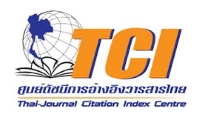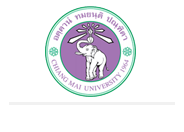JOURNAL DETAIL
Brown Rot Disease Caused by Trichoderma hamatum on the Edible Lily, Lilium leichtlinii var. maximowiczii
Paper Type |
Contributed Paper |
Title |
Brown Rot Disease Caused by Trichoderma hamatum on the Edible Lily, Lilium leichtlinii var. maximowiczii |
Author |
Chun-lan Zhang, Bo Zhang, Xue-ying Yang, Odeshnee Naicker and Lei Zhao |
Email |
458560969@qq.com |
|
Abstract: Lilium leichtlinii var. maximowiczii is commonly known as the edible lily or sweet lily. Bulbs of this edible lily are frequently used in traditional Chinese medicine, and they are revered for their nutritional content. As of 2018, brown rot disease on cultivated L. leichtlinii var. maximowiczii bulbs has become a disease of concern in Jilin Province, China, with a disease incidence of 29.43%. The bulbs infected with brown rot disease appear as large, regularly shaped, and yellow-brown or black-brown lesions. However, the causal agent is not yet known. Therefore, this study aims to confirm both the causal pathogen by using Koch’s postulates and to further establish, to the species level, the identity of this organism via morphological and molecular methods. The pathogen was later identified as Trichoderma hamatum. Healthy bulbs were inoculated with T. hamatum, which produced the initial disease symptoms with brown spots appearing at the inoculation sites; the same pathogen was then isolated again from diseased bulbs. To the best of our knowledge, this is the first report of bulb rot disease of cultivated L. leichtlinii var. maximowiczii caused by T. hamatum in China. Our work may be beneficial, especially for designing control measures for bulb rot disease in the commercial cultivation of L. leichtlinii var. maximowiczii. |
|
Start & End Page |
1500 - 1508 |
Received Date |
2022-07-07 |
Revised Date |
2022-09-23 |
Accepted Date |
2022-09-23 |
Full Text |
Download |
Keyword |
bulb, phylogenetic analysis, new disease |
Volume |
Vol.49 No.6 (November 2022) |
DOI |
https://doi.org/10.12982/CMJS.2022.103 |
Citation |
Zhang C., Zhang B., Yang X., Naicker O. and Zhao L., Brown Rot Disease Caused by Trichoderma hamatum on the Edible Lily, Lilium leichtlinii var. maximowiczii, Chiang Mai Journal of Science, 2022; 49(6): 1500-1508. DOI 10.12982/CMJS.2022.103. |
| View:1,501 Download:585 | |
RELATED ARTICLE
Article ID: e2025090
Author:Thuy Thi Xuan Nguyen, Worrawit Suktrakul, Napassorn Thamkirati, Nichagarn Greetatorn, Kanyarat Rakpong, Kazunori Sasaki, Quoc Bao Nguyen, Chau Nguyen Ngoc Bao and Chatchawan Jantasuriyarat
Vol.52 No.6 (November 2025) View: 185 Download:109
Article ID: e2024050
Author:Kattika Pattarach, Shao-Lun Liu and Jaruwan Mayakun
Vol.51 No.3 (May 2024) View: 1,268 Download:312
Article ID: e2024002
Author:Wannisa Raksamat and Ingorn Kimkong
Vol.51 No.1 (January 2024) View: 1,078 Download:1,486
Article ID: e2023040
Author:Dulanjalee Lakmali Harishchandra, Wei Zhang, Thilini Chethana Kandawatte Wedaralalage, Xinghong Li, Ratchadawan Cheewangkoon
Vol.50 No.4 (July 2023) View: 1,532 Download:717
Article ID: e2023031
Author:Kanchana Srimai and Angsana Akarapisan
Vol.50 No.3 (May 2023) View: 1,585 Download:642
page: 693 - 700
Author:Arooj Naseer, Sana Jabeen, Samia Khanum, Bushra Waseem and Abdul Nasir Khalid
Vol.49 No.3 (Special Issue II : May 2022) View: 1,651 Download:748
Copyrights © Since 2021 All Rights Reserved by Chiang Mai Journal of Science










